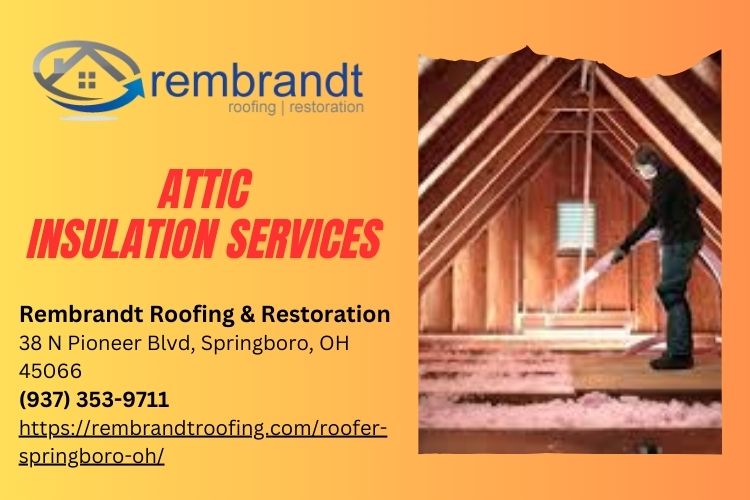When it comes to replacing your roof, the choices you make can have a lasting impact—not just on your home but also on the environment. Many homeowners are now considering eco-friendly options that not only enhance the aesthetics and durability of their homes but also contribute positively to the planet. In this comprehensive article, we will delve into various sustainable roofing materials, energy-efficient solutions, and other eco-conscious strategies for your next roof replacement project.
What is Eco-Friendly Roofing?
Eco-friendly roofing involves using sustainable materials and practices that minimize environmental impact while maximizing efficiency. The concept encompasses a variety of materials and techniques aimed at reducing energy consumption, promoting recycling, and fostering sustainability.
Why Opt for Eco-Friendly Roofing?
The advantages of choosing eco-friendly roofing extend beyond aesthetic appeal. Here are some compelling reasons:
- Energy Efficiency: Eco-friendly roofs often feature materials that reflect sunlight, reducing heat absorption and lowering energy bills. Sustainability: Many eco-friendly options use recycled or renewable materials, minimizing waste. Longer Lifespan: Sustainable roofing materials often have longer lifespans than traditional options, leading to fewer replacements over time. Increased Property Value: An eco-friendly roof can enhance your property’s marketability due to growing consumer demand for sustainable living.
Types of Eco-Friendly Roofing Materials
1. Metal Roofing
Metal roofs are gaining popularity as an eco-friendly option due to their longevity and recyclability. They reflect solar radiant heat, which can reduce cooling costs by 10-25%.
Benefits of Metal Roofing:
- Durable with a lifespan exceeding 50 years. Made from recycled materials; fully recyclable at the end of their life cycle. Resistant to extreme weather conditions.
2. Solar Tiles
Solar tiles integrate photovoltaic technology directly into the roof. They generate electricity while providing traditional roofing benefits.

Advantages of Solar Tiles:
- Reduce reliance on fossil fuels. Can lead to significant long-term savings on energy bills. Enhance property value through green upgrades.
3. Green Roofs
A green or living roof consists of vegetation planted over a waterproofing membrane. This type offers insulation benefits and supports biodiversity.
Pros of Green Roofs:
- Absorb rainwater, reducing stormwater runoff. Provide natural insulation; lower heating and cooling costs. Improve air quality by filtering pollutants.
4. Recycled Shingles
Recycling old shingles into new ones reduces landfill waste significantly. These shingles can be made from asphalt or other materials.
Features of Recycled Shingles:
- Cost-effective compared to new shingles. Help decrease urban heat islands by reflecting sunlight.
5. Clay and Concrete Tiles
Clay tiles are made from natural clay—one of the most abundant resources on Earth—while concrete tiles are often made from recycled materials.
Merits of Clay and Concrete Tiles:
- Extremely durable with a lifespan exceeding 100 years. Naturally resistant to damage from UV rays, pests, and fire.
Is Roof Replacement Necessary? Understanding When to Replace Your Roof
Before opting for a roof replacement near you, it’s crucial to assess whether it’s indeed necessary. Common signs include:
Age: Most roofs last between 20 to 30 years depending on material quality. Damage: Missing shingles or visible leaks may signal more extensive issues. Energy Bills: Unexpected spikes in your energy bill could indicate poor insulation from your roof.Finding Reliable Roofing Contractors Near You
Once you've decided on an eco-friendly roof replacement project, finding experienced roofing contractors is vital for ensuring quality installations.
Tips for Choosing Roofing Companies:
Check Reviews: Look for customer testimonials online or ask for references. Verify Licenses: Ensure all contractors hold valid licenses and insurance coverage. Request Quotes: Obtain multiple quotes for better cost comparisons.Eco-Friendly Practices During Installation
When you engage with roofing services like Rembrandt Roofing & Restoration, make sure they follow eco-friendly practices during installation:
Proper Waste Management: Ensure old roofing materials are disposed of responsibly or recycled where possible. Minimizing Noise Pollution: Choose contractors who take noise-reducing measures during installation. Use Non-Toxic Sealants: Opt for low-VOC adhesives that minimize harmful emissions.Cost Considerations in Eco-Friendly Roof Replacement Projects
While initial costs may be higher than conventional roofing options, consider the long-term savings associated with eco-friendly roofing:
| Material Type | Average Cost (per square foot) | Lifespan | Energy Savings Potential | |--------------------|-----------------------------|-------------|--------------------------| | Metal | $5 - $12 | 50+ years | High | | Solar Tiles | $15 - $30 | 25+ years | Very High | | Green Roof | $10 - $25 | 40+ years | Medium | | Recycled Shingles | $3 - $7 | 20+ years | Low | | Clay/Concrete Tiles | $5 - $15 | 100+ years | Medium |
Exploring Additional Eco-Friendly Options for Your Next Roof Replacement Project
Beyond material selection, several other strategies can enhance the sustainability of your project:
1. Insulation Enhancements
Proper insulation complements your new roof by improving energy efficiency significantly.
2. Cool Roof Technology
This technology involves reflective surfaces designed to deflect sunlight away from your home, reducing heat absorption.
3. Rainwater Harvesting Systems
Installing systems to collect rainwater can significantly decrease water usage around local roof inspection your property.
Frequently Asked Questions about Eco-Friendly Roof Replacement
Q1: What is the best eco-friendly roofing material?
A1: The best material varies based on individual needs; however, metal roofs and solar tiles are frequently rated highly due to their longevity and energy efficiency.
" width="560" height="315" frameborder="0" allowfullscreen>
Q2: How much does an eco-friendly roof replacement cost?
A2: Costs vary widely based on material choice but generally range from $5-$30 per square foot depending on complexity and material type.
Q3: Will my homeowner's insurance cover an eco-friendly roof?
A3: Many insurers offer discounts for eco-friendly upgrades; however, it's essential to consult with your provider regarding specific coverage terms.
Q4: How long do eco-friendly roofs last?
A4: Depending on the material chosen—metal roofs can last over 50 years while clay tiles may exceed 100 years with proper maintenance.
Q5: Can I install solar panels after my new roof is completed?
A5: Yes! Installing solar panels post-roofing is common; just ensure that the initial installation accommodates this future upgrade.

Q6: Are there financial incentives available for installing an eco-friendly roof?
A6: Many local governments offer tax credits or rebates for green improvements; check with local regulations in Springboro OH or consult Rembrandt Roofing & Restoration for guidance!
Conclusion
In conclusion, exploring eco-friendly options for your next roof replacement project not only enhances your home's durability but also contributes positively towards environmental sustainability efforts—a win-win situation! With numerous innovative choices available today—from metal roofs to solar installations—homeowners have ample opportunities to reduce their ecological footprint while enjoying significant cost savings over time.
Contact Us
Rembrandt Roofing & Restoration
Address: 38 N Pioneer Blvd, Springboro, OH 45066

Phone: (937) 353-9711
By taking these steps toward sustainable living through informed choices in roofing materials and practices—and engaging trusted professionals like Rembrandt Roofing & Restoration—you’ll be well-positioned not only as a responsible homeowner but also as a steward of our planet’s resources!